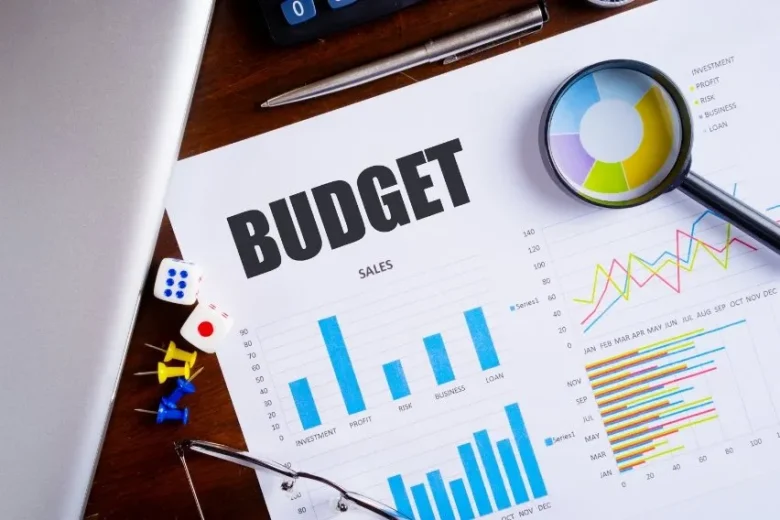A business budget is the backbone of any successful organization. It serves as a roadmap, guiding you through financial decisions and ensuring sustainable growth. Without a budget, it becomes nearly impossible to track expenses, set realistic goals, or make informed investments. A business budget is not just about controlling costs; it’s about leveraging your resources effectively to reach your objectives. Whether you’re a startup or a well-established company, learning how to create a business budget is a critical skill that leads to financial stability.
Understanding Your Business’s Financial Landscape
Before you can create an effective budget, you need a clear understanding of your current financial situation. This means evaluating your income sources, expenses, liabilities, and assets. By knowing where your money is going and where it’s coming from, you create a strong foundation for realistic financial planning. For example, a detailed evaluation will reveal patterns in spending or revenue generation, helping you identify areas that require improvement. Understanding your financial landscape not only helps you create a budget but also gives you insight into the overall health of your business.
Gathering Financial Data for Budget Creation
Good data leads to a great budget. Start by gathering all relevant financial records, including profit and loss statements, balance sheets, and past tax returns. Add information on recurring expenses, like rent, utilities, and payroll. Don’t forget to take note of one-time expenses or seasonal costs. The more comprehensive your financial data, the more accurate your budget will be. Additionally, consistent record-keeping ensures you don’t overlook critical details, which could later result in budget discrepancies. This step may take time, but the payoff is well worth the effort when you establish reliable financial forecasts.
Projecting Revenue Streams and Sales Forecasts
A critical part of any budget is estimating how much income your business will generate. Revenue projections should be based on historical data and industry trends, as well as realistic growth expectations. Break down your revenue streams by source, such as product sales, service fees, or investments, so you know where your money comes from. Don’t inflate numbers in an attempt to make your budget look better—realism is key. For startups without much history, consider market research and competitor analysis to make informed revenue projections. Accurate projections provide the financial guardrails your business needs to thrive.
Identifying and Estimating Fixed Costs
Fixed costs are expenses that remain constant regardless of how well your business is doing, such as rent, insurance, and salaries for full-time staff. Because these costs don’t fluctuate, they’re usually the easiest to budget. Start by listing all your fixed costs, and ensure that they’re accounted for in your spreadsheets. Fixed costs form the foundation of your business budget, as they represent the non-negotiable expenses. By accurately identifying and estimating your fixed costs, you ensure your budget supports the business’s most fundamental operations.
Calculating Variable Costs and Their Impact
Variable costs, like raw materials, utilities, or commission-based wages, change based on business performance. Unlike fixed costs, variable costs fluctuate, often in correlation with production or sales volumes. Accurately estimating variable costs requires analyzing past spending patterns and assessing how changes in sales might affect these expenses. For example, a business planning to ramp up production should anticipate higher costs for raw materials and labor. By allocating sufficient room in your budget for variable costs, your business will be prepared for fluctuations and avoid financial shortfalls.
Creating a Comprehensive Budget Spreadsheet
Once you have all your data, it’s time to organize it into a functional budget spreadsheet. A clear and straightforward layout will make it easier to track expenses and revenue. Divide your spreadsheet into sections for fixed costs, variable costs, revenues, and any additional categories relevant to your business. Tools like Excel or Google Sheets offer templates for budgeting, or you can use software specifically designed for business finances. Don’t forget to leave room for contingency funds to address unexpected expenses. A well-structured spreadsheet is the key to simplifying ongoing budget management.
Analyzing and Adjusting Your Initial Budget
Creating your first budget isn’t the final step—it’s just the start. Once your initial budget is drafted, review it critically. Are there categories where you’ve allocated too much or too little money? Have you accounted for unexpected expenses or variable costs? Share your budget with your team members or a financial advisor to gain insights from multiple perspectives. Making necessary adjustments during this phase ensures your budget is practical and aligned with your business goals. Remember, flexibility is essential—your initial draft will evolve as your business grows.
Budget Implementation and Monitoring Strategies
A budget, no matter how perfectly designed, is useless unless implemented correctly. Begin by aligning your actual spending and revenue tracking processes with the budget. Most businesses accomplish this using accounting software that integrates seamlessly with their budget spreadsheets. Once the budget is implemented, monitor compliance regularly. Look for deviations from planned expenses or revenue and identify trends that require immediate attention. Monitoring keeps you informed, allowing you to address financial challenges before they escalate.
Regular Budget Review and Variance Analysis
Budgeting necessitates ongoing evaluations and adjustments. Schedule monthly or quarterly reviews to compare your actual financial performance with your budget. This process is known as variance analysis and involves identifying where revenue or expenses have deviated from expectations. Variance analysis helps you refine your budget over time and strengthens your ability to forecast future business performance. Continuous review ensures your budget remains relevant and helps you stay proactive in addressing financial challenges.
The Key to Financial Success
Creating a business budget is not just an exercise in organizing numbers—it’s a vital tool for securing financial success. By understanding your financial landscape, gathering accurate data, and keeping track of all costs, you create a framework that empowers your business to achieve its goals. Budgets ensure your financial resources are used wisely, reduce waste, and prepare your business for growth opportunities. Keep in mind that budgeting is an ongoing process and requires consistent reviews and adjustments. Dedicate time to crafting and improving your budget, and it will become the foundation for your business’s long-term success.
FAQs
1. Why is creating a business budget important?
A business budget helps you manage your resources effectively, plan for growth, and track expenses, ensuring financial stability.
2. How often should I review my budget?
It’s recommended to review your budget monthly or quarterly to ensure it remains accurate and aligned with your business goals.
3. What tools can I use to create my budget?
You can use software like Excel, Google Sheets, or specialized accounting platforms to create and manage your business budget.
4. How do I handle unexpected expenses in my budget?
Include a contingency fund in your budget to address unforeseen costs and reduce financial strain during emergencies.
5. Can startups benefit from a business budget?
Absolutely. A budget is crucial for startups to allocate funds wisely, track performance, and attract investors by showcasing financial discipline.




